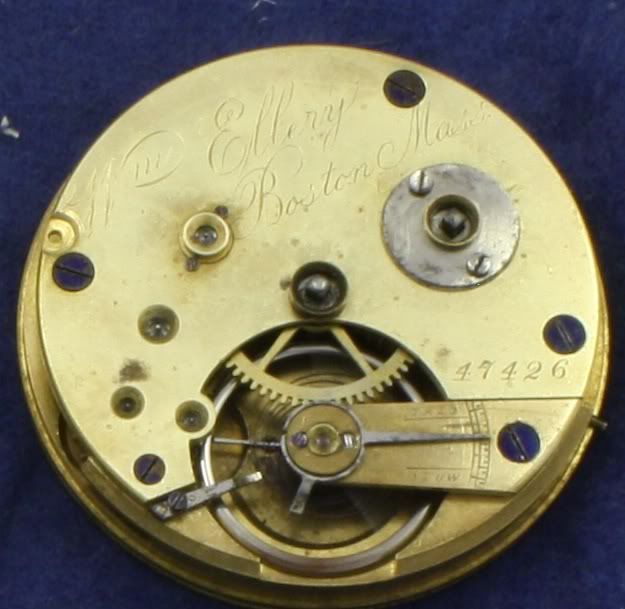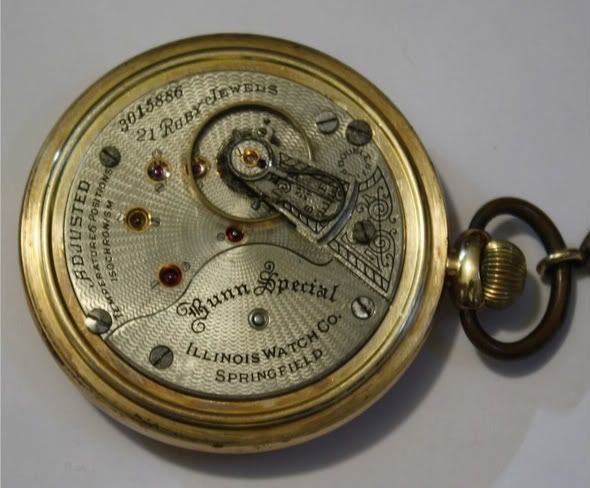I bought a few watches this past week, and also took the chance to catch up on some photography for some watches which I've had for a while.
I had someone locally ask me if I had a 23j 16 size Vanguard to sell. I didn't, but a quick trip to Ebay led me to not one, but two watches needing fairly simple repairs. I bought them both, and will probably keep one and sell the other.
Once just needed a quick cleaning, and took right off.


Here's the other-awaiting a simple yet important part called the shipper spring(which I had to order) and a balance staff(which I fortunately have).

And, a couple of others which I've had for a little while.
Here's a private label Hamilton 940.

And, a high-grade 17 jewel Illinois Getty Model-a grade 187. Note the glass-enamel dial with a gothic style signature-a mark of quality on Illinois watches. Although this one doesn't offer a lot of eye candy, the quality of finish on it is superb. These are interesting in that they were advertised as being adjusted to 6 positions-one of the few 17 jewel watches so adjusted.


This is a fairly scarce watch to begin with. It was made in both an open faced and hunting cased versions. Total production of this variant is listed as 5,160. Of these, 1610 were hunting cased, and 3750 open faced.
The open faced versions, however, can be broadly divided into two categories-single roller(which mine is) and double roller-which were later. There were only 1500 made in single roller.
This can be further broken down, as among the 1500 single roller OF watches, there have been four observed marking variants. According to the reference I'm using(the Illinois Encyclopedia), more than half of these 1500 movements were randomly marked with grade number. So, that means that my watch is one of only about 700 unmarked gr.187 movements.
Furthermore, some are simply marked "Adjusted" and some marked "Adjusted 6 positions, Isochronism." This is related to age, with newer movements(by SN) being fully marked.
So, by my calculation, this is probably one of 300-500 fully unmarked gr.187 movements. Certainly not rare, but not common either. This is probably of little interest to most here, but at least I think worth pointing out.



























